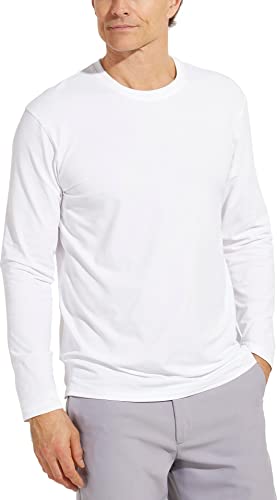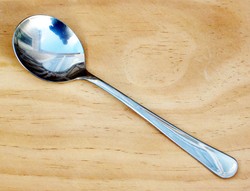Our mother earth is no longer as healthy as before. Her ozone layer has been somewhat depleted, therefore allowing more of the sun's harmful UV rays to pass through the atmosphere. It's enough to say that the sun's harmful UV rays increases our risk of skin cancer and speeds up aging process to convince us to take some measures for sun protection. However, it is inevitable to avoid the sun completely. We still need to go out and move on with our lives. If you love the sun, don't fret. You could still go out. You just need to learn how to protect yourself from the harmful rays.

Sun Protection 101
by LyraKua
There are several way to protect yourself against the sun's harmful UV rays.
Sunscreen
Paraben-Free Sunscreens
 | Eltamd UV Clear SPF 46, 48-Gram 1.7 oz. Elta MD UV Shield 46 helps reduce the appearance of blemishes, discoloration, and photo-damaged skin while protecting from broad spectrum of UVA/UVB rays. UV Shield is lightweig... |
 | Banana Boat Natural Reflect Sunscreen Lotion SPF 50, 4 Fluid Ounce BANANA BOAT natural sun protection deflects UVA or UVB rays without harsh chemicals. 100% naturally-sourced mineral sunscreen is as effective as chemical sunscreens. Tear-free a... |
 | Neutrogena Sensitive Skin Sunscreen Lotion, SPF 60, 3 Ounce Sensitive Skin Sunblock Lotion SPF 60+ provides superior physical broad-spectrum UVA/UVB protection. It goes on evenly, rubs in on skin, and feels ultra light. Plus, it's formul... |
Umbrella
Clothing
Some manufacturers of apparels indicate the UPF of the fabric. UPF stands for Ultraviolet Protection Factor. It is a rating of how much UV rays could penetrate the fabric. According to the Skin Cancer Organization, only clothes with a UPF of 15-50+ may be labeled as having sun protection. In addition, like regular clothing, clothes with sun protection may lose its effectiveness if stretched, become wet, or washed and worn many times. In addition, the organization offers a seal of recommendation to fabrics of at least UPF 30, and UPF 50 as having the best sun protection.
Laundry Additive
You could increase your fabrics sun protection by using Sun Guard in the laundry. Add it along with the detergent and you'll increase the UPF of your clothes, effective even after 20 washings (Skin Cancer Organization).
If you're on a tight budget, instead of buying expensive clothing with UPF, you could instead use SunGuard to boost your existing garments' UPF protection. The product is safe for sensitive skin and doesn't alter the clothing's color and comfort.
Eyes and Lips
 | Neutrogena Norwegian Formula Lip Moisturizer, SPF 15, 0.15 Ounce (Pack of 2) Lip Moisturizer softens, smoothes and protects dry, chapped lips with no waxy feel. This moistureenriched formula soothes and conditions your lips, keeping them healthy looking ... |
 | Natural Ice Lip Protectant/sunscreen sport SPF 30, 0.16-Ounce Tubes (Pack of 12) SPF 30. Medicated. For extreme weather. Cooling soothing protection. Naturally. Made in the USA. |
 | Aveeno Essential Moisture Lip Conditioner with SPF 15 Stick, 0.15 Ounce (Pack of 2) This unique lip treatment provides essential long-lasting moisturization to help condition and protect dry, chapped lips. With an exclusive combination of natural oatmeal and na... |
UV Index
The index differs from place to place. In my country, the UV rating rises from 9-11 (which is from high to extreme ratings) at as early as 9am during the summer. UVI is important especially when you're planning for an outing. Of course, the higher the rating, the more sun protection measures needed. The rating is affected by how near you are in the equator, the altitude of the place, and by the cloudiness of the sky. Being near the equator allows less time for the atmosphere to absorb UV rays since this is the part of the globe nearest to the sun. Being on high altitudes has the same concept as well. When you are higher above ground, the sun reaches you faster. Cloudiness blocks UV rays from us. But if the clouds are thin and broken, the sun's rays could penetrate easily.
You could check your region's UV index at UV Awareness.
The Bottom Line
You might also like
Walking Your Way to HealthThere is much research that shows that walking is beneficial to body and mind.
Dealing with Chronic Pain: The Spoon TheoryChronic pain can be extremely hard to explain to loved ones, but The Spoon Th...







 What are BB Creams?on 09/25/2014
What are BB Creams?on 09/25/2014
 Chinese Tea Ceremonyon 09/04/2014
Chinese Tea Ceremonyon 09/04/2014
 Guide to Chinese Dim Sumon 08/16/2014
Guide to Chinese Dim Sumon 08/16/2014
 A Simplified Introduction to the Chinese Languageon 08/22/2014
A Simplified Introduction to the Chinese Languageon 08/22/2014



Comments